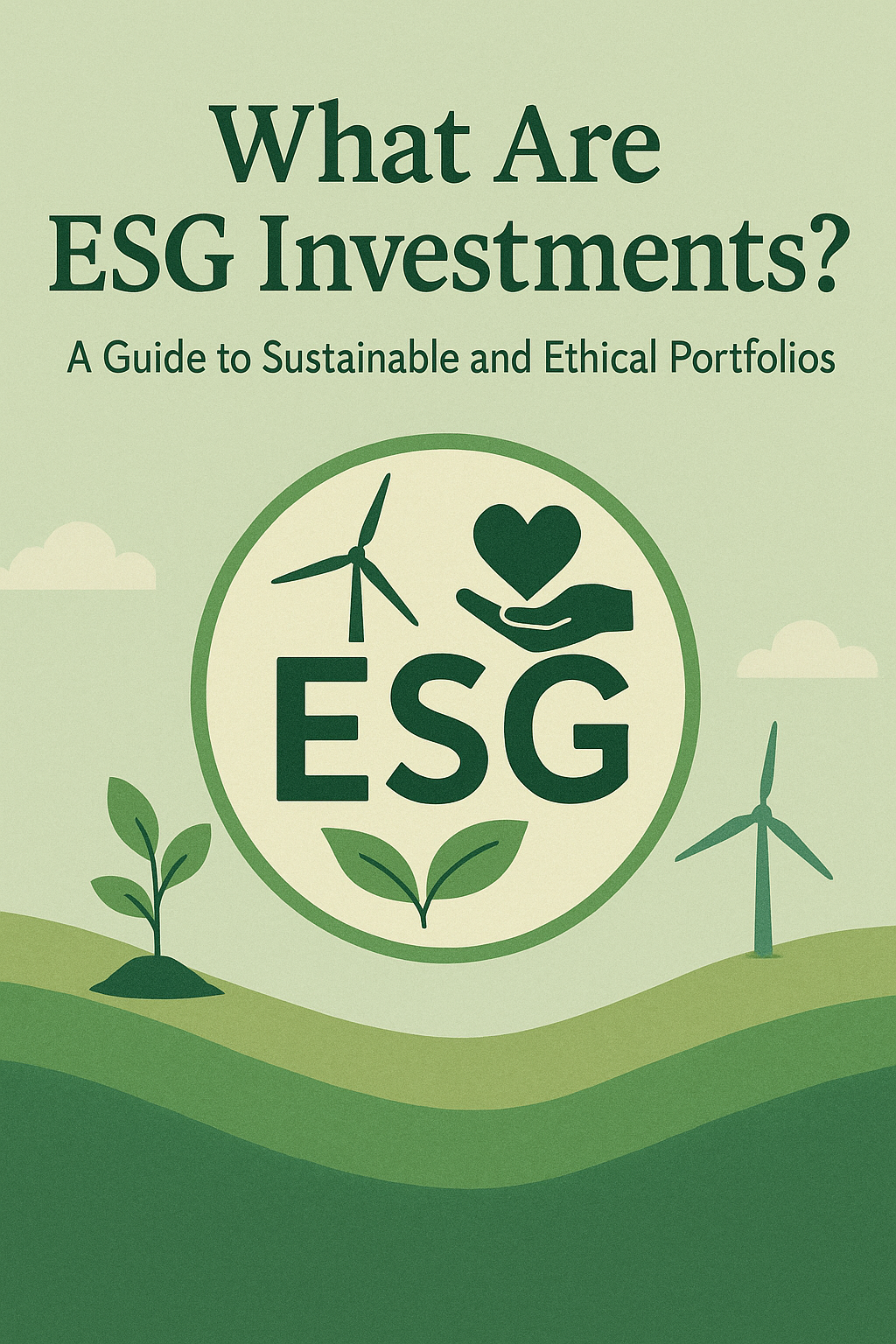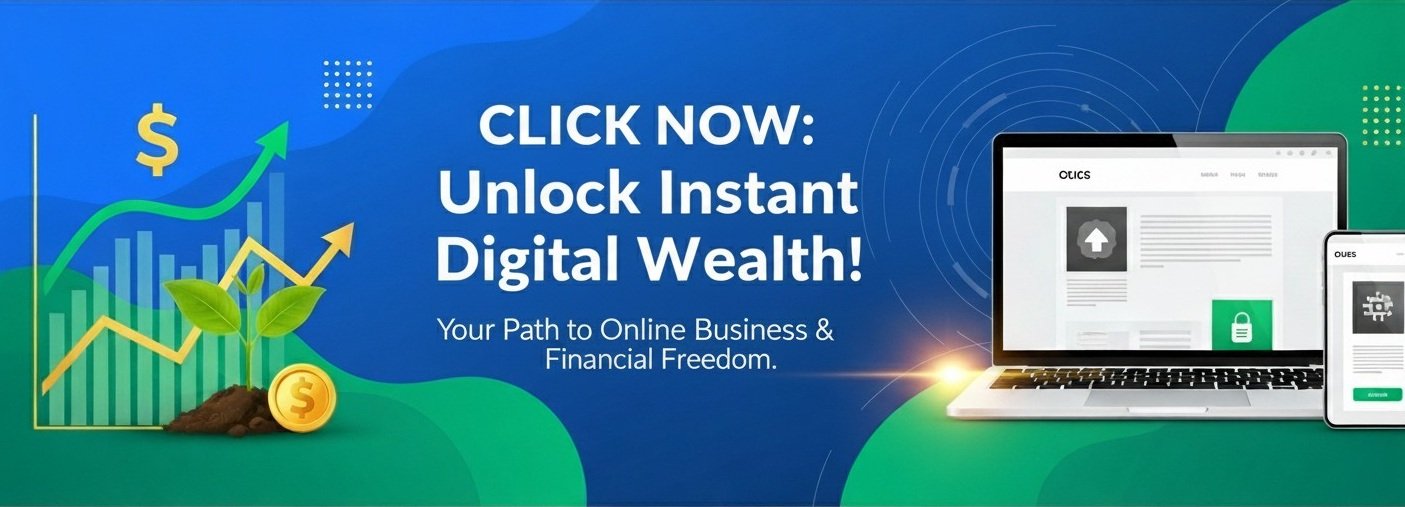As investors increasingly seek to align their financial goals with their values, ESG investments—focusing on Environmental, Social, and Governance factors—have gained significant traction. ESG investing allows individuals to support companies that prioritize sustainability, ethical practices, and strong governance while potentially achieving competitive returns. From addressing climate change to promoting diversity and transparency, ESG portfolios offer a way to make a positive impact without sacrificing financial performance. This 4,000-word guide explores what ESG investments are, their benefits and challenges, and how to build a sustainable and ethical portfolio.
Whether you’re a beginner exploring responsible investing or an experienced investor seeking to diversify, this article provides a comprehensive roadmap to ESG investing. We’ll cover the core components of ESG, compare investment options, and offer practical steps to integrate ESG principles into your portfolio, all while leveraging tools like stock screeners and AI-driven insights.
What Are ESG Investments?
Defining ESG Investing
ESG investing refers to the practice of selecting investments based on three key criteria:
- Environmental (E): A company’s impact on the planet, including its carbon footprint, renewable energy use, and waste management.
- Social (S): How a company manages relationships with employees, customers, and communities, focusing on issues like labor practices, diversity, and human rights.
- Governance (G): The company’s leadership, transparency, and accountability, including board diversity, executive compensation, and anti-corruption policies.
ESG investments prioritize companies that score highly on these criteria, aiming to generate financial returns while promoting positive societal and environmental outcomes.
How ESG Differs from Traditional Investing
Traditional investing focuses primarily on financial metrics like revenue, earnings, and market share. ESG investing adds non-financial factors, evaluating companies based on their sustainability and ethical practices. For example, an ESG investor might avoid fossil fuel companies, even if profitable, and instead invest in renewable energy firms with strong governance.
Types of ESG Investments
ESG principles can be applied to various asset classes:
- Stocks: Shares of companies with high ESG scores (e.g., Tesla for clean energy).
- Exchange-Traded Funds (ETFs): Baskets of ESG-compliant stocks (e.g., iShares ESG Aware MSCI USA ETF).
- Mutual Funds: Actively managed funds focusing on ESG criteria.
- Bonds: Green bonds or sustainable debt issued by governments or corporations.
- Real Estate: Investments in energy-efficient buildings or sustainable infrastructure.
- Private Equity: Funding startups with ESG-focused missions.
Why ESG Matters
- Investor Demand: A 2023 Morningstar study found that ESG funds attracted $330 billion in global inflows, reflecting growing interest.
- Risk Mitigation: Companies with strong ESG practices often face lower regulatory or reputational risks.
- Performance: Studies, like one from MSCI, show ESG portfolios can match or outperform traditional investments over time.
Reference Link
Learn more about ESG investing from Investopedia’s ESG guide.
The Components of ESG
Environmental Factors
Environmental criteria assess a company’s impact on the planet. Key considerations include:
- Carbon Emissions: Efforts to reduce greenhouse gas emissions.
- Renewable Energy: Use of solar, wind, or hydroelectric power.
- Resource Efficiency: Sustainable use of water, materials, and energy.
- Waste Management: Recycling, pollution control, and hazardous waste reduction.
Example: NextEra Energy, a leader in wind and solar, scores highly on environmental metrics due to its focus on clean energy.
Social Factors
Social criteria evaluate a company’s relationships with stakeholders. Key areas include:
- Employee Welfare: Fair wages, safe working conditions, and benefits.
- Diversity and Inclusion: Representation of women, minorities, and marginalized groups.
- Community Engagement: Support for local communities through philanthropy or partnerships.
- Human Rights: Ethical supply chains and avoidance of forced labor.
Example: Microsoft’s commitment to diversity programs and ethical AI development enhances its social ESG score.
Governance Factors
Governance focuses on a company’s leadership and accountability. Key metrics include:
- Board Diversity: Inclusion of diverse perspectives in leadership.
- Transparency: Clear financial reporting and anti-corruption measures.
- Executive Compensation: Alignment of pay with performance and shareholder interests.
- Shareholder Rights: Fair voting practices and protection against hostile takeovers.
Example: Salesforce’s transparent governance and stakeholder-focused policies make it a governance leader.
Reference Link
Explore ESG criteria in depth at MSCI’s ESG fundamentals.
Benefits of ESG Investing
Financial Performance
Contrary to the myth that ESG sacrifices returns, studies show competitive performance:
- A 2022 Harvard study found ESG funds outperformed non-ESG peers by 0.5% annually over a decade.
- ESG companies often have lower volatility due to reduced regulatory or reputational risks.
Risk Mitigation
ESG-focused companies are less likely to face:
- Regulatory Fines: Strong environmental practices reduce penalties.
- Reputational Damage: Ethical labor policies avoid public backlash.
- Operational Risks: Sustainable resource use ensures long-term viability.
Example: BP’s 2010 Deepwater Horizon disaster led to a $60 billion loss, highlighting the risks of poor environmental practices.
Positive Impact
ESG investing allows you to support causes you care about:
- Climate Action: Fund renewable energy or carbon-neutral companies.
- Social Justice: Invest in firms promoting diversity or fair labor.
- Ethical Governance: Back companies with transparent leadership.
Growing Demand
Younger investors, particularly Millennials and Gen Z, prioritize ESG:
- A 2023 Pew Research survey found 67% of Gen Z investors prefer sustainable investments.
- Institutional investors, like pension funds, are increasingly mandating ESG criteria.
Reference Link
Read about ESG performance at Morningstar’s sustainability insights.
Challenges of ESG Investing
Greenwashing
Greenwashing occurs when companies exaggerate or misrepresent their ESG credentials to attract investors. For example, a firm might claim “net-zero” goals without concrete plans, misleading investors.
Solution: Verify ESG claims using third-party ratings from MSCI, Sustainalytics, or Bloomberg.
Inconsistent Standards
ESG ratings vary across providers due to differing methodologies:
- A company rated highly by MSCI might score lower with Sustainalytics.
- Lack of universal standards complicates comparisons.
Solution: Cross-reference multiple ESG rating sources and focus on specific criteria (e.g., carbon emissions).
Performance Variability
While ESG funds often perform well, they may underperform in certain sectors (e.g., energy during oil booms) due to exclusions like fossil fuels.
Solution: Diversify across ESG sectors (e.g., tech, healthcare, renewables) to balance returns.
Higher Fees
ESG funds, especially actively managed ones, may have higher expense ratios than traditional funds (e.g., 0.5% vs. 0.2%).
Solution: Opt for low-cost ESG ETFs like Vanguard ESG U.S. Stock ETF (ESGV) with expense ratios below 0.1%.
Reference Link
Understand greenwashing at Forbes’ ESG guide.
Step 1: Define Your ESG Priorities
Aligning Values with Investments
Before building an ESG portfolio, clarify your priorities:
- Environmental: Focus on climate change, renewable energy, or biodiversity?
- Social: Prioritize diversity, labor rights, or community development?
- Governance: Value transparency, anti-corruption, or board diversity?
Example: An investor passionate about climate change might prioritize companies with net-zero commitments, while another focused on social justice might target firms with strong diversity policies.
Using AI to Identify Priorities
AI tools like ChatGPT can help refine your focus. Prompt ChatGPT with:
“Suggest ESG priorities for an investor concerned about climate change and ethical governance.”
A sample response might include:
- Invest in companies with verified carbon-neutral goals.
- Prioritize firms with diverse boards and transparent reporting.
- Avoid fossil fuel or high-emission industries.
Documenting Your Goals
Create a table to outline your ESG priorities and investment goals:
| ESG Factor | Priority | Example Companies/Funds |
|---|---|---|
| Environmental | Renewable energy | NextEra Energy, iShares ESG MSCI ETF |
| Social | Diversity and inclusion | Microsoft, Parnassus Endeavor Fund |
| Governance | Board diversity | Salesforce, Vanguard ESG U.S. Stock ETF |
Step 2: Research ESG Investment Options
ESG Stocks
Invest in individual companies with strong ESG scores:
- Technology: Microsoft (AI ethics, carbon neutrality).
- Energy: NextEra Energy (renewable energy leader).
- Consumer Goods: Unilever (sustainable sourcing).
Use stock screeners on platforms like TradingView or Finviz to filter for ESG criteria (e.g., low carbon emissions, high governance scores).
ESG ETFs and Mutual Funds
ETFs and mutual funds offer diversified ESG exposure:
- ETFs:
- iShares ESG Aware MSCI USA ETF (ESGU): Tracks U.S. companies with high ESG scores.
- Vanguard ESG U.S. Stock ETF (ESGV): Low-cost, broad ESG exposure.
- Mutual Funds:
- Parnassus Core Equity Fund: Actively managed with a focus on ESG leaders.
- Calvert Equity Fund: Emphasizes social and environmental impact.
Green Bonds
Green bonds finance environmentally friendly projects, like renewable energy or sustainable infrastructure.
- Example: Apple’s $2.2 billion green bond issuance for clean energy projects.
Alternative Investments
- Real Estate: Invest in REITs focusing on energy-efficient buildings.
- Private Equity: Fund ESG-focused startups via platforms like SeedInvest.
Reference Link
Compare ESG funds at Morningstar’s fund screener.
Step 3: Evaluate ESG Ratings and Data
Understanding ESG Ratings
Third-party providers assign ESG scores based on company performance:
- MSCI: Rates companies from AAA (leader) to CCC (laggard).
- Sustainalytics: Scores risk levels (low to high) across ESG factors.
- Bloomberg: Offers detailed ESG data via its terminal or reports.
Example: Tesla has an MSCI ESG rating of AA due to its clean energy focus but faces social risks from labor controversies.
Accessing ESG Data
- Brokerage Platforms: Fidelity, Charles Schwab, and Vanguard provide ESG ratings for stocks and funds.
- Financial Websites: Yahoo Finance and Bloomberg offer ESG metrics.
- Stock Screeners: Use TradingView or Finviz to filter for ESG scores.
Avoiding Greenwashing
- Check primary sources (e.g., company sustainability reports).
- Cross-reference ratings from multiple providers.
- Look for certifications like B Corp or CDP (Carbon Disclosure Project).
Reference Link
Explore ESG ratings at Sustainalytics’ methodology.
Step 4: Build Your ESG Portfolio
Diversification
Diversify across sectors, asset classes, and ESG factors to balance risk and return:
- Sectors: Technology, healthcare, renewables, consumer goods.
- Asset Classes: Stocks, ETFs, bonds, real estate.
- Geographies: U.S., Europe, emerging markets.
Example Portfolio:
- 50% ESG ETFs (e.g., ESGU, ESGV).
- 20% Individual stocks (e.g., Microsoft, NextEra Energy).
- 20% Green bonds.
- 10% ESG real estate funds.
Low-Cost Options
Minimize fees to maximize returns:
- Choose ETFs with expense ratios below 0.2% (e.g., ESGV at 0.09%).
- Avoid high-fee mutual funds unless actively managed performance justifies costs.
Rebalancing
Review and rebalance your portfolio quarterly or annually to maintain your desired allocation and ESG focus.
Reference Link
Learn portfolio diversification at Vanguard’s investing basics.
Step 5: Monitor and Adjust Your ESG Investments
Tracking Performance
- Financial Returns: Compare your portfolio’s performance to benchmarks like the S&P 500 or MSCI ESG Leaders Index.
- ESG Impact: Assess the societal and environmental outcomes (e.g., carbon reduction, diversity metrics).
- Tools: Use Morningstar or Bloomberg for performance tracking.
Staying Informed
- News: Follow ESG trends on platforms like Bloomberg or Reuters.
- Company Reports: Read annual sustainability reports for updates on ESG progress.
- AI Tools: Prompt ChatGPT with:
“Summarize recent ESG trends in the renewable energy sector.”
Adjusting Your Portfolio
- Add New Investments: Incorporate emerging ESG leaders or sectors.
- Exit Underperformers: Sell companies with declining ESG scores or financials.
- Respond to Risks: Adjust for regulatory changes or market shifts.
Reference Link
Track ESG performance at Bloomberg’s ESG data hub.
Step 6: Common Pitfalls and How to Avoid Them
Over-Reliance on Ratings
Pitfall: Blindly trusting ESG ratings without verifying data.
Solution: Cross-check ratings and read company sustainability reports.
Ignoring Financial Performance
Pitfall: Prioritizing ESG over returns, leading to underperformance.
Solution: Balance ESG criteria with financial metrics like EPS and revenue growth.
Lack of Diversification
Pitfall: Over-concentration in one sector (e.g., renewables) increases risk.
Solution: Spread investments across multiple sectors and asset classes.
Falling for Greenwashing
Pitfall: Investing in companies with misleading ESG claims.
Solution: Use third-party ratings and certifications to validate claims.
Conclusion
ESG investments offer a powerful way to align your portfolio with your values while pursuing competitive returns. By understanding the Environmental, Social, and Governance factors, researching options, evaluating ratings, and building a diversified portfolio, you can create a sustainable and ethical investment strategy. Despite challenges like greenwashing and inconsistent standards, tools like stock screeners, ESG ratings, and AI-driven insights make it easier to navigate this growing field.
Start your ESG investing journey today by defining your priorities, exploring low-cost ETFs, and staying informed about sustainability trends. With careful planning and ongoing monitoring, you can build a portfolio that delivers both financial success and positive impact.
Disclaimer
The information provided in this article is for educational purposes only and does not constitute financial advice. Investing involves significant risks, including the potential loss of capital. Always conduct your own research and consult a qualified financial advisor before making investment decisions. The author and publisher are not responsible for any losses incurred from using the information in this article.








